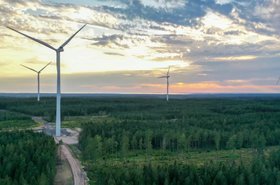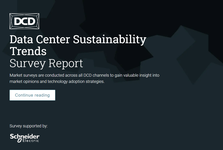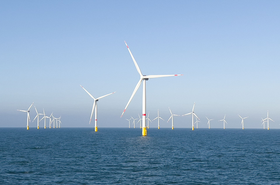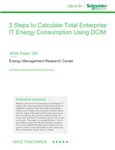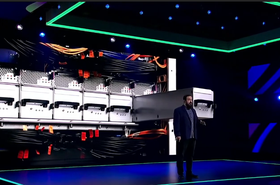In the era of digital transformation, data centers, and transmission networks have become indispensable components of our increasingly connected world. This is clear in the growth of the market, which is projected to increase from $50 billion in 2021 to $120 billion by 2030.
However, their crucial role in facilitating our digital lives can come at an environmental cost that needs to be accounted for. Data centers consume substantial amounts of power due to their extensive computing equipment, encompassing servers, storage devices, and networking infrastructure. Their continuous operation also generates significant heat, necessitating energy-intensive cooling systems to maintain optimal temperatures.
The challenge for data centers
Power-hungry and growing in size and volume, data centers are therefore a key source of growing energy demand globally. A recent report by the IEA found that data center power consumption increased by over 60 percent between 2015 and 2021, and transmission networks' usage grew up to 60 percent. Meeting growing energy demands is a major hurdle for data centers and the electricity grids they are hosted on, and is indeed causing some challenges for the industry. Some countries are considering restrictions on new data center licenses due to environmental concerns (e.g. the Irish Government).
In order to effectively mitigate the climate impact of data centers, energy efficiency improvements alone are insufficient. It is crucial that the industry prioritizes low-carbon or carbon-free electricity procurement in order to reduce Scope 2 emissions (electricity, heating, and cooling). We can already see this shift happening, with tech giants like AWS, Google, and Meta (Facebook) amongst the top five clean energy buyers since 2010. All three have significant data center operations, and have adopted ambitious public targets that go beyond the most common 100 percen renewable coverage commitments, either running on carbon-free electricity around the clock everywhere (i.e. 24/7 CFE) or investing in projects around the world that can guarantee costs-efficient and large scale emissions avoidance (i.e. emissions-first).
The solutions: 24/7 CFE or avoided emissions strategies
These leading companies have adopted these targets because they recognize that current renewable energy procurement techniques aren't enough to fully decarbonize their operations. A recent report by McKinsey & Co. found that a solar PPA, which enables “100 percent renewable” claims, actually only reduces emissions for the off-taker between 40-50 percent, due to the intermittent availability of solar power. Our own research has shown that organizations might be reporting less than half of their emissions using the current Scope 2 accounting principles compared to what would be reported using a more granular approach with more stringent time and location origin requirements.
24/7 CFE is a strategy that involves matching an energy buyers' electricity demand every hour of every day, with corresponding carbon-free resources within their local electricity grid. It has been defined by the UN 24/7 Carbon-free Energy Compact as “the end state of a fully decarbonized electricity system and a transformative approach to energy procurement, supply, and policy design.” The strategy involves using granular data about the time and location of energy production to match local production on a (sub)hourly basis with your energy consumption.
Alternatively, the Emissions First approach focuses on maximizing emissions avoidance per dollar invested by contributing to the decarbonization of grids regardless of where the company’s operations actually take place. In practice, this means that rather than solely focusing on delivering clean electricity to their facilities, the emphasis is on reducing emissions on a broader scale and doing it in the most cost-effective way possible. This approach also involves providing clean energy buyers with access to the most accurate and granular data possible to maximize the emissions reduction impact of their investments
Specific challenges for different kinds of data centers
Different kinds of data centers have different levels of autonomy and options when it comes to adoption of more carbon-aware energy procurement approaches like the ones outlined above.
For instance, hyperscale data centers are very large facilities that support the computing needs of major Internet companies, social media platforms, and cloud service providers. Because they consume a lot of electricity, hyperscale data centers are in a good position to sign agreements that focus on reducing emissions.
Colocation data centers, on the other hand, are facilities where multiple organizations can rent space for their servers and IT infrastructure. The data center provides power, cooling, and security, while the organizations manage their own equipment. Colocation centers don't always have control over their electricity supply or the ability to sign their own energy contracts. However, by using data-driven insights on energy contracts, certificates, and emissions, they can still improve their services for customers. This information also allows data center users to have better visibility into their energy usage and emissions, helping them make more accurate claims about their environmental impact. By utilizing these insights, colocation data centers can enhance customer satisfaction and contribute to sustainability efforts.
In conclusion, data centers are crucial for our connected world but pose environmental challenges due to their power consumption. To address these challenges, the industry must prioritize low-carbon electricity procurement, such as 24/7 Carbon Free Energy (CFE) or avoided emissions strategies. Tech giants like AWS, Google, and Meta have already taken steps in this direction. Different types of data centers face specific challenges, but by leveraging data-driven insights, they can enhance services, improve sustainability, and contribute to a greener digital infrastructure.


